Reviews
Clive Barker
UK, 1987
Credits
Review by Leo Goldsmith
Posted on 11 October 2013
Source Netflix VOD
Categories 31 Days of Horror X
Of course, we are meat, we are potential carcasses. If I go into a butcher shop I always think it’s surprising that I wasn’t there instead of the animal.
—Francis Bacon
One of the more curious aspects of horror films - especially of the so-called splatter film or “torture porn” sub-genres - is the question of gore. One hardly needs an analyst to map out the gleeful carnalities that a little thrill, a sudden shock, might produce—the psychosensual regions between relish and dread that most horror films dabble in are easy to comprehend; they are indeed clichés of the pop psychology of horror movies. And violence is even simpler: everyone likes the idea of kicking someone’s ass, and even flying through a plate-glass window looks pretty fun so long as you can dust yourself off and go back inside to join the bar-fight.
Gore seems a little different. Sure, it’s not for everybody, and at its simplest it might just be a slightly ickier form of the sensationalist dabbling enjoyed by any horror fan, tiptoeing to the very edge of the grotesque before scurrying back with a weak giggle.
Clive Barker’s Hellraiser - at least in its initial premise, if not quite in its full realization - proposes another theory of gore. Here, Barker makes the curious claim that, rather than reviled or used for shock, gore should be enjoyed for its own sake, even identified with or desired. As if to oblige, his film spares the audience almost nothing: hooks tearing flesh, lots of closeups of maggots, a rat cut open with switchblade. With the right crowd, one could easily find the results comical—what’s known as “splatstick,” which exploits the absurdity and shock of splatter for laughs. But I suspect Barker has other, more perverse ends in mind.
Adapted by Barker from his own novella The Hellbound Heart, the film wastes no time in issuing its unpleasant pleasures: corrupt, insatiable hedonist Frank - in desperate search of “pleasures which would redefine the parameters of sensation” - buys a mysterious box from a Chinese stereotype (shades of Gremlins), plays with it a bit in the attic/dungeon of his childhood home, and pretty soon chains shoot out from nowhere and rip him apart. Shadowy figures wander amid the gory, jangling meat-hooks, eery mood-lighting, and fog-machine miasmas, and dark hands delicately, lovingly reassembling chunks of Frank’s facial flesh - an ear here, a nose there - as though it were a jigsaw puzzle.
Of course, what Frank desires - to be taken, like any adolescent Fangoria subscriber, to the limits of sensation - turns out to be rather more than he bargained for. But if we are to empathize not with him - he’s pretty loathsome after all - but with his new friends, things might seem a little different. In Barker’s book, what Frank encounters is explained as a group of “theologians” from “the Order of the Gash” (admittedly, a funny name for a group of theologians) who are just so much more goth than Frank that they consider pain and pleasure fully interchangeable, even indivisible.
In other words, Frank may be a pretty louche character, but he’s no match for the Cenobites, who traipse around a supernatural parallel universe of meat-hooks, dingy hallways, and chiaroscuro, of unimaginable pleasures and pains of the flesh. Scarified, blue-skinned, and multiply pierced, the Cenobites are surely Barker’s greatest invention, and among modern horror’s most indelible creations, drawing upon a rich mix of late-20th century stylings, from BDSM leathers to darkwave to deathrock. Indeed, it’s a little surprising that so ridiculous a creation as Pinhead (here billed as the “Lead Cenobite”), grid-faced and yellow-toothed, with a head like a goth-girl’s backpack, could continue to be fairly terrifying some twenty-five years on. And this is to say nothing of his companions, which include a fat bald man with sunglasses and a female cenobite dubbed, creatively, “Female Cenobite,” whose piercings are, by today’s standards, not even that shocking. One can imagine Pinhead and his Gash (cool name for a band by the way) whiling away their non-torturing hours listening to The Sisters of Mercy and The Damned, painting each other’s nails black, and watching their VHS of The Crow over and over again.
Perhaps part of the reason Barker’s designs still work is their other major influence - the paintings of Francis Bacon - with which they share a fascination with violence and the brutal extremities of sensation. Much like Lyne’s Jacob’s Ladder a few years later, Hellraiser borrows liberally from Bacon’s work, most notably in the Chatterer Cenobite, a close cousin to many of Bacon’s screaming popes and beastly, toothy agonizers. Even Frank’s mutilated jigsaw face seems derived from Bacon’s 1971 self-portrait. And one wonders if the influence was in some ways mutual: Barker’s Engineer, a large, hideous dog-worm creature, is clearly inspired by Bacon’s 1944 triptych, “Three Studies for Figures at the Base of a Crucifixion,” of which Bacon made a second version the year after Hellraiser’s premiere.
Of course, as terrifying and seductively grotesque as all this is, it’s impossible for Barker to sustain across an entire film—perhaps especially one made in the 1980s. But even as Hellraiser remains admirably macabre and yucky, it nonetheless devolves into a fairly generic horror movie once Frank’s brother Larry (an unusual good guy role, at least to start with, for veteran creepster Andrew Robinson—Scorpio from Dirty Harry) and his adulterous wife Julia (played at wonderfully sub-zero temperatures by Clare Higgins) enter take over. Julia’s transformation from mere bitch to craven murderess is certainly enjoyable to watch, and of course it enables Frank’s return to fleshy, earthly form—thanks to her willingness to seduce men at the local pub and then beat them to death in the attic so that Frank can feed off them. And this occasions some remarkable and extremely disgusting feats of good old-fashioned horror effects, as Frank’s spirit begins to take the form of a gross, pus- and muscle-swaddled skeleton. “See?” Frank asks. “It’s making me whole again. Every drop of blood you spill puts more flesh on my bones. And we both want that, don’t we?”
But of course, everyone wants a little flesh - at least that’s Barker’s view of the world - and no one wants Frank’s flesh more than the Cenobites. And even as the film sustains its unpleasantness reasonably well, the transformation of the Cenobites into mere boogeymen who need to be put back in their puzzle-box seems inevitable. Nor did future installments in the franchise do much to capitalize on the initial abject horribleness of Barker’s concept. The second film carries the flame well enough (especially in its first scene, which gives us Pinhead’s backstory), but subsequent films follow the well-worn sequel trajectories of Jason and the Muppets: the Cenobites take Manhattan and conquer space, and then there’s a movie about a video game—you know the pattern.
But strangely, even with fuzzy VHS memories of menacing pseudo-cenobites with camcorders stuck into their heads and using CDs as weapons (both innovative contributions to the franchise from 1992’s Hellraiser 3: Hell on Earth), the diminishing returns of the rest of the series don’t seem to have dulled the sheer, gutsy hellishness of the original’s premise. Perhaps that’s the lot of all such films, and all such pursuits of perversion: after much habituation to such intensities, we find ourselves like the Cenobites, flesh scarred and nerves dulled, bored by the world’s banal horrors and hungry for something more.
More 31 Days of Horror X
-

Safe
1995 -

Viy
1967 -
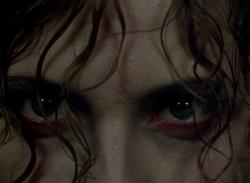
Black Narcissus
1947 -

Possession
1981 -

Carrie
1976 -

The Devils
1971 -
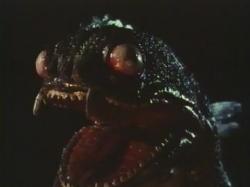
The Sea Serpent
1984 -

The Dark Half
1993 -

The Baby
1972 -
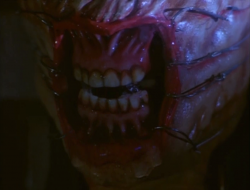
Hellraiser
1987 -

The White Reindeer
1952 -
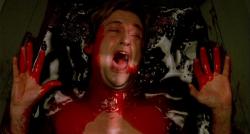
The Serpent and the Rainbow
1988 -
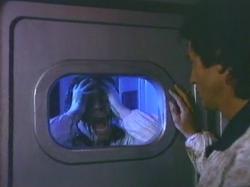
Endless Descent
1989 -

Prom Night
1980 -

Night Train Murders
1975 -
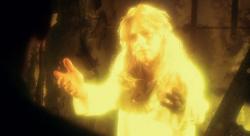
God Told Me To
1976 -

In a Child’s Name
1991 -
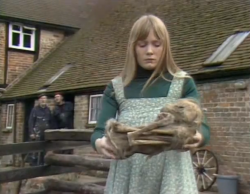
Beasts
1976 -

Prom Night II
1987 -

Men Behind the Sun
1986 -
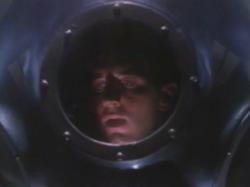
DeepStar Six
1989 -

At Midnight I’ll Take Your Soul
1964 -

They Came Back
2004 -
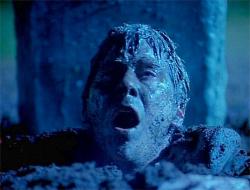
Buried Alive
1990 -
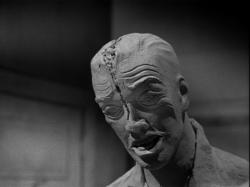
A Bucket of Blood
1959 -

Buffy the Vampire Slayer
1992 -

Night and Fog
1956 -

It Came From Beneath the Sea
1955 -
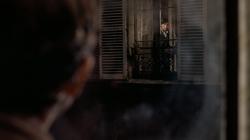
The Tenant
1976 -

Tokyo Gore Police
2008 -

The Rocky Horror Picture Show
1975
We don’t do comments anymore, but you may contact us here or find us on Twitter or Facebook.



